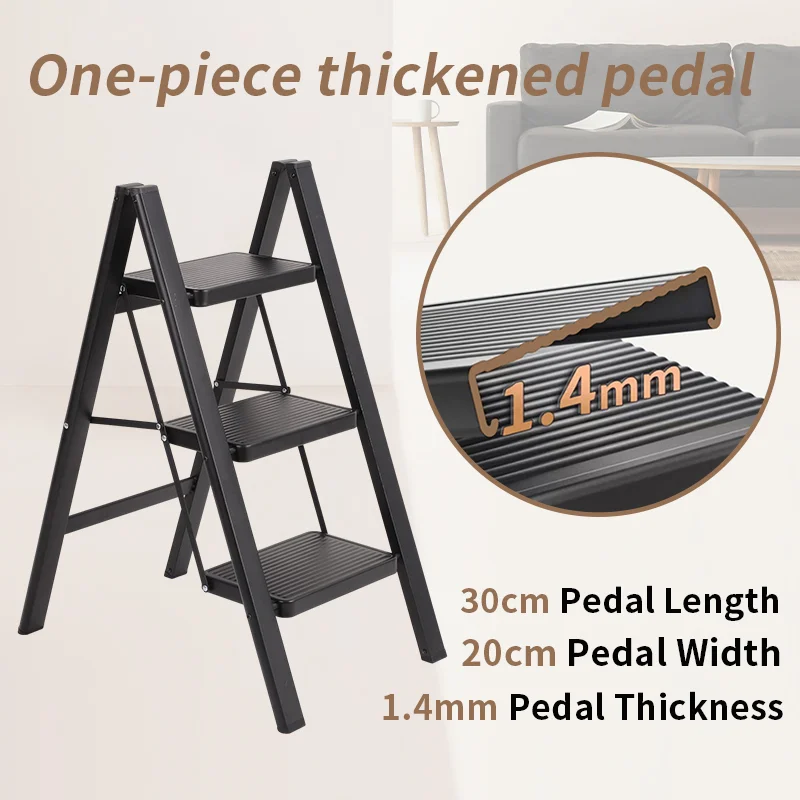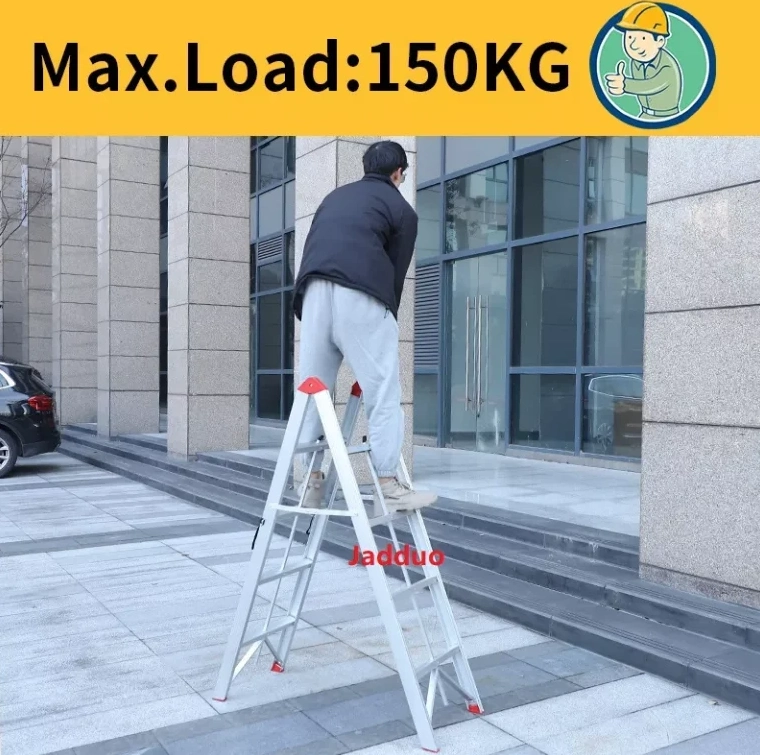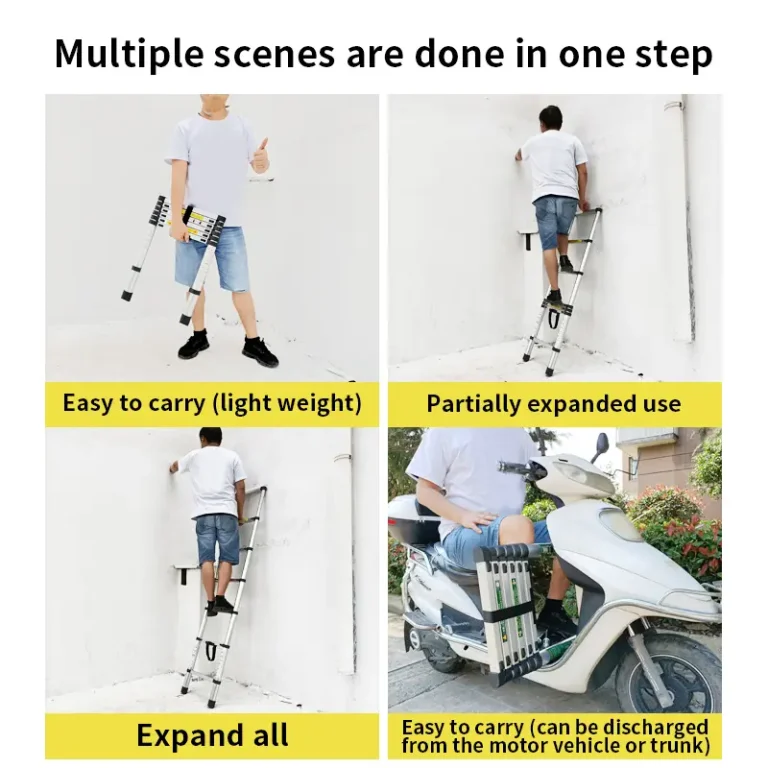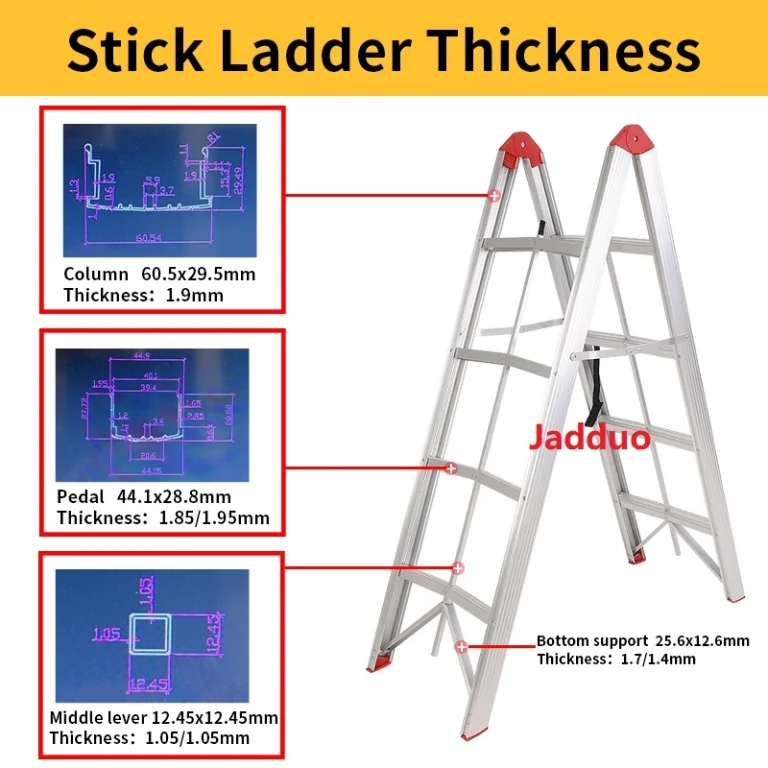The 3-step ladder rule is a super important safety trick that stops dangerous tumbles. Wanna know why it’s such a big deal? This guide breaks down the science behind it, shows how to use it at home, and points out which ladder designs keep you safest. Whether you’re doing chores like painting or fixing stuff outside, this rule can save you from a trip to the hospital. Honestly, it’s kinda cool how one simple habit can make such a difference.

What Is the 3-Step Ladder Rule and Why Does It Matter?
The 3-Step Ladder Rule Is a Key Safety Guideline
The 3-step ladder rule means you don’t stand on the top three rungs of a straight ladder or the top two steps of an A-frame ladder. It’s there to keep you from falling when you’re up high. Falls happen because you lose balance or the ladder gets wobbly. Never climb the top two rungs—it’s a huge fall risk! For straight ladders, skip the top three rungs to stay safe.
This rule keeps your body low so you don’t tip over. It also makes sure you’ve got ladder parts above you to grab or hold tools. Plus, it follows safety ideas that help you stay steady while working.
The Rule Comes from Accident Studies and Safety Standards
This rule didn’t just pop up out of nowhere. It’s based on years of looking at ladder accidents. It’s now part of big safety rules like EN131 in Europe and ANSI A14 in the US. These rules come from experts, safety groups, and ladder makers working together. For example, EN131-2:2025 tests ladders for weight and slipperiness to make sure they’re safe.
The rule exists because falls, even from low heights, can hurt or kill. One real case showed a guy falling just 2 meters and not making it—crazy how a small mistake can be so serious.
Where Does This Rule Apply at Home?
Household Tasks Require the 3-Step Rule
You might not think about it, but lots of home jobs need this rule. Stuff like swapping light bulbs, cleaning gutters, or putting up holiday lights can put you near the top of a ladder. Tasks like hanging ceiling lights or trimming tree branches often use multi-purpose ladders.
When you’re painting a room or reaching high shelves on an A-frame ladder, standing too high messes with your balance. Outside, jobs like clearing roof junk or cutting branches mean wind or uneven ground can make things riskier if you’re too high.
Ignoring the Rule Brings Big Risks
Standing near the top leaves less ladder under you to keep things steady. You also lose handholds above, so slipping is more likely. Slippery or empty rungs are a top reason for accidents. Plus, if you’re too high, you might stretch too far, which is super dangerous.
The Rule Boosts Everyday Safety
Staying below the top three steps lets you grab side rails easily. It also stops you from stretching too much. You can keep three-point contact—two hands and one foot, or two feet and one hand—way easier lower down. This simple habit cuts fall risks a ton during regular chores.
For example, when you’re putting up Christmas lights, staying low on a JADDUO ladder means you can hold on tight and not wobble, even if it’s windy.
How Do Certain Ladders Help You Follow This Rule?
Design Features Support Safe Use
Some ladders are built to make following safety rules easy. Wide, non-slip steps give your feet more grip. They spread pressure evenly, so your feet don’t hurt during long jobs. Rubber feet stop the ladder from sliding on slick floors like tile or concrete.
Locks that hold telescopic parts or folding joints steady prevent the ladder from collapsing mid-job. That’s a big deal when you’re climbing high.
JADDUO’s ladders, for instance, have wide steps and tough locks. They’re made to keep you safe, whether you’re fixing a roof or reaching a high shelf.
Some Ladders Go Beyond Safety Standards
Yup, some ladders are extra safe. They use strong aluminum alloy frames that hold over 150kg. Big stabilizers work great on uneven ground. Textured steps grip even when wet. These ladders are light but tough and don’t rust, so they’re good for inside or outside jobs.
JADDUO, a top ladder maker since 2015, nails this. Their aluminum alloy ladders meet EN131 and ANSI rules. They’ve got wide non-slip pedals. The step dimensions of a household ladder are generally 30 x 20 cm. And they fold up small for easy storage in tight homes. They hold up to 150kg safely. Whether you’re hanging decorations or cleaning gutters, JADDUO’s wide anti-slip step telescopic tent ladder feels comfy and steady.
What Should You Do Before Using a Household Ladder?
Inspect Your Ladder Before Every Use
Before you climb, even for a quick job, check your ladder:
- Make sure it’s long enough for the task.
- Look for cracks, bends, missing rungs, or worn feet.
- Clean off oil, water, ice, or dirt from steps.
- Check that locks click into place firmly.
If something’s broken, don’t climb until it’s fixed. JADDUO’s ladders come with a checklist to make this quick.
Climbing Techniques Cut Fall Risks
Face the ladder when going up or down. Keep three points of contact—two hands, one foot, or two feet, one hand. Don’t carry tools in your hands—use a tool belt. Stay centered between the rails and never climb past the top two steps unless the ladder’s made for it.
For example, when painting a wall, clip your paint can to a JADDUO ladder’s tool hook so your hands are free to grip.
Storage Habits Affect Ladder Life
How you store your ladder matters. After using it:
- Pull telescopic ladders all the way in.
- Keep them in a dry spot, away from sun.
- Oil moving parts now and then.
Indoor ladders last about 2 years. Outdoor ones wear out faster from weather. A JADDUO ladder stored in a garage stays strong longer than one left in the rain.

How Does Engineering Influence Ladder Safety?
Material Selection Is Key for Home Ladders
Aluminum alloy is the go-to material. It’s strong but light, unlike old wooden ladders. It doesn’t rust, even in wet spots like bathrooms. It stays solid in hot or cold weather too. Another option is an iron ladder, which is lighter than aluminum alloy and more suitable for home use.
Features Improve Grip and Weight Spread
Non-slip rubber pads stop small wiggles while you climb. Wide steps reduce foot aches during long jobs like painting ceilings. Overlapping joints spread weight evenly, which is super important when you’re carrying heavy tools.
The step dimensions of JADDUO’s household ladders are generally 30 x 20 cm for natural foot placement. That’s a game-changer when you’re up there for hours.
How Can You Educate Yourself Further About Ladder Safety?
Homeowners Can Learn Proper Techniques
Big ladder brands like JADDUO offer free manuals online. They show stuff like the right angle (75°) and safe rung zones. You can watch them on your phone before starting a job.
Local hardware stores sometimes hold workshops. They show DIY folks how to use ladders safely for home projects.
Visual Aids Reinforce Safe Habits
Pictures help a ton. Warning stickers are placed on both sides of the ladder, as shown in the figure below. EN131-2:2025 rules make these labels a must. They’re like a nudge to stay safe.


JADDUO’s packaging has drawings for folding or pulling in the ladder. This helps you avoid pinching your fingers when setting up or packing up.
FAQ
Q1. Can I ever stand on the top step if I’m just changing a lightbulb quickly?
A: No—even quick tasks pose serious risks if performed above recommended step levels. Always follow the 3-step rule regardless of task duration.
Q2. What’s better for home use?
A: The 3-step household ladder is the most commonly used model and can meet all basic height requirements for household use.
Q3. Is it worth investing in a wide anti-slip pedal ladder?
A: Yes—especially if you perform frequent tasks requiring prolonged standing. Wider pedals reduce fatigue while anti-slip textures enhance stability across all surfaces.









